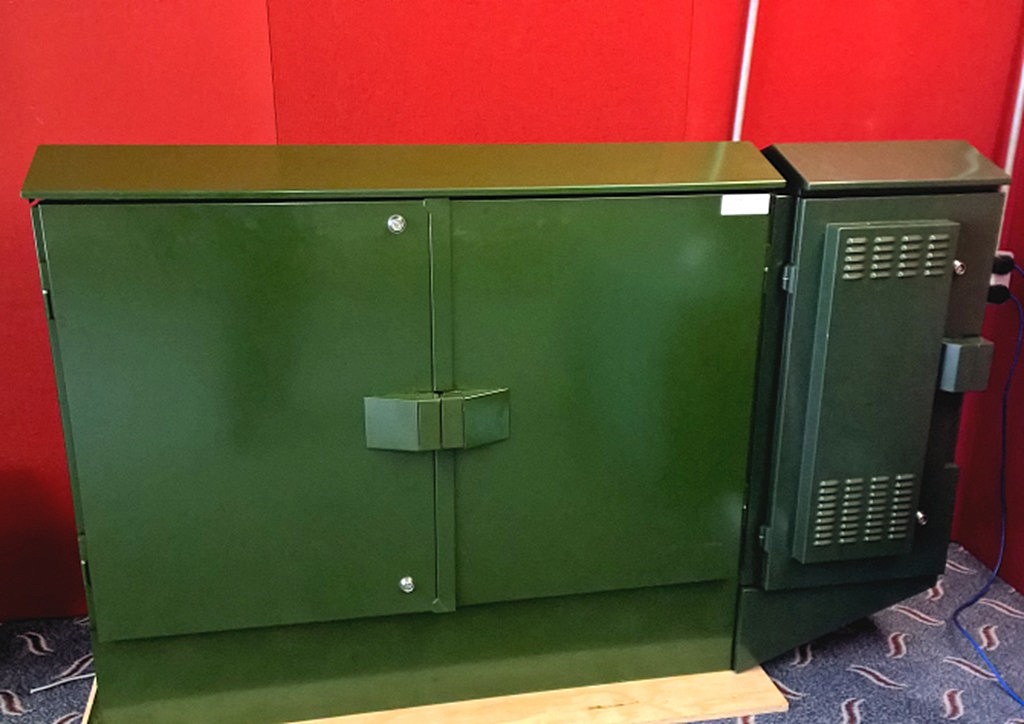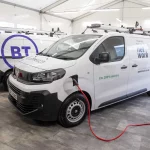BT Openreach Reveals G.fast Broadband Cabinet Extension Pod
We already know a lot about BT’s forthcoming roll-out of “ultrafast” 300-500Mbps G.fast technology and last month’s new technical document (here) similarly appeared to confirm that the operator had opted to deploy the service from street cabinet extensions. This week we finally got a look at one.
Openreach’s (BT) original plan for G.fast appeared to revolve around a Fibre-to-the-distribution-point (FTTdp) approach, which would have run a high capacity fibre optic cable all the way from your local telephone exchange and taken it to a smaller node that could be installed inside a big building, underground or on top of a telegraph pole. The remaining line would then have gone over a much shorter run of existing copper cable to reach your home.
Advertisement
The advantage of the FTTdp approach is that you can often reduce the amount of remaining copper cable and thus improve speeds (copper lines suffer signal degradation over distance, even more so with G.fast’s use of 106-212MHz vs FTTC / VDSL at 17-30MHz), but it’s also expensive and time consumer to deploy.
However some positive results from BT’s early trials and recent improvements in the technology eventually made it much more viable for the operator to simply deploy G.fast from directly alongside an existing PCP street cabinet, which is cheaper and faster. For example, last year BT showed it was able to deliver 300Mbps over a 350 metre copper line (here) and more enhancements are coming.
We’d still expect to see some FTTdp further along the line to fill gaps, but the cabinet based approach now appears to be the forming the main thrust of their roll-out. In this setup the G.fast extension (pod) is actually attached to the side of a normal green PCP cabinet, while the power and fibre optic cable are run in from the usually nearby FTTC / VDSL2 cabinet.

(Green PCP on Left / G.Fast Pod on Far Right)
According to a related report on Thinkbroadband, each G.fast pod will only support 96 ports / lines via 4 cards (each with 24 ports). But initially early G.fast extension cabinets may only deal with half the number of ports until the required Vectoring (anti-crosstalk interference) technology has evolved to cope with busier areas.
Advertisement
Admittedly 96 ports might not seem like much, especially as some of Openreach’s biggest FTTC cabinets could handle 288 lines. On the other hand much of the operator’s initial roll-out will be in their core commercial market and many of those premises may already be able to receive good speeds from FTTC, which could hinder demand for G.fast.
BT clearly has a challenge in deciding whether to price its G.fast service closer to FTTC or premium FTTP, but then again you can never underestimate the impact of an ISP’s marketing department and consumer demand for the biggest number. The entry-level G.fast option is a 160Mbps (30Mbps upload) product, so we’d expect that to come in above 80Mbps FTTC by several pounds extra per month and many people might pay for that provided the promised speeds can be delivered.
At this stage it’s also unclear how Openreach would handle high demand areas, particularly as building either a super long cabinet or rows of mini extension cabs could begin to look a touch.. unusual. Perhaps FTTdp will play a role here. We have asked the question and will report back.
BT currently intends to make its GEA-NGA2 G.fast (ITU G.9700/9701) service available to 10 million premises by 2020, with “most of the UK” likely to be done by 2025 (we predict around 60% UK coverage). Initially G.fast will only offer top download speeds of ‘up to’ 300Mbps (50Mbps upload), before later increasing to 500Mbps. On top of that 2 million FTTP lines will also be added by 2020, with around half coming from businesses and many being upgrades for urban Exchange Only Line (EOL) areas or new builds.
Advertisement
Mark is a professional technology writer, IT consultant and computer engineer from Dorset (England), he also founded ISPreview in 1999 and enjoys analysing the latest telecoms and broadband developments. Find me on X (Twitter), Mastodon, Facebook, BlueSky, Threads.net and Linkedin.
« Virgin Media Deal to Put Ultrafast Broadband into UK New Build Homes


















































Comments are closed